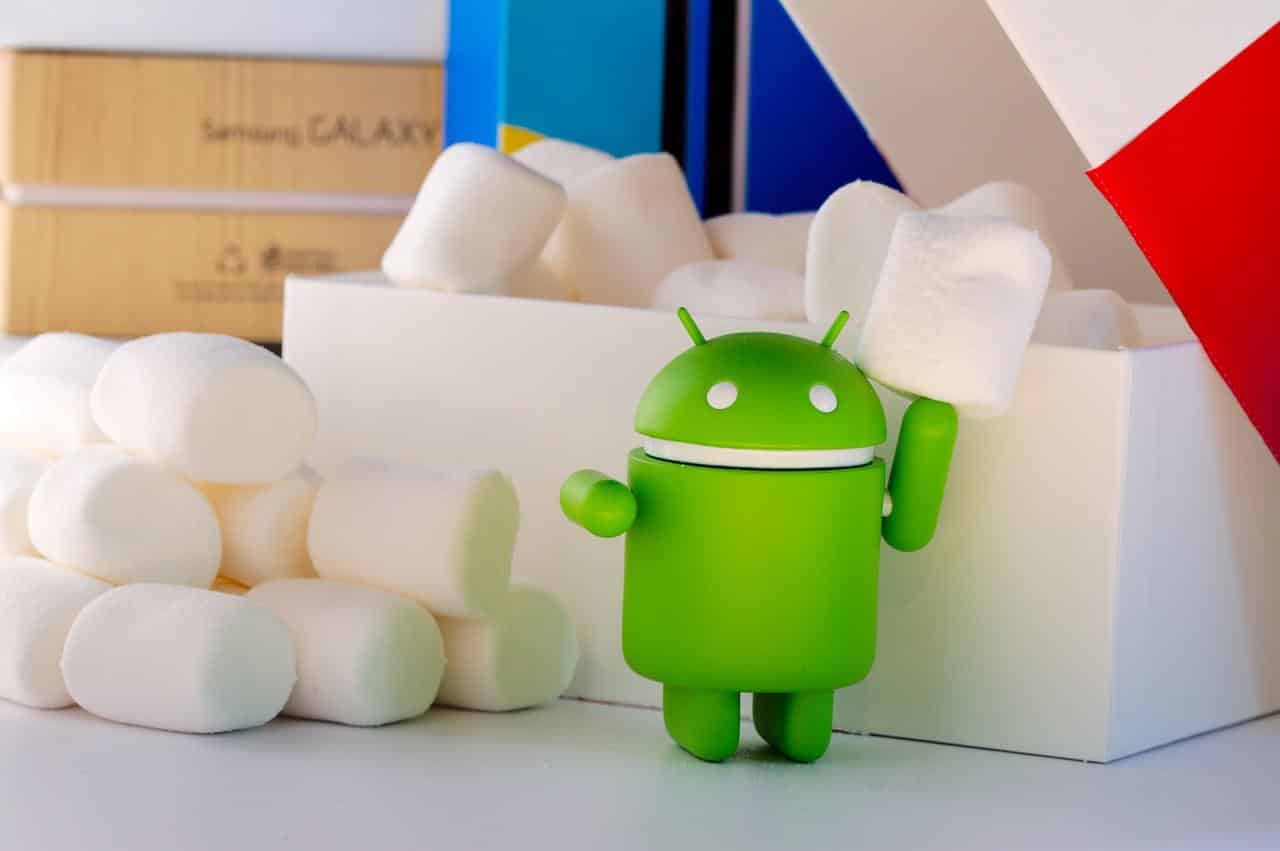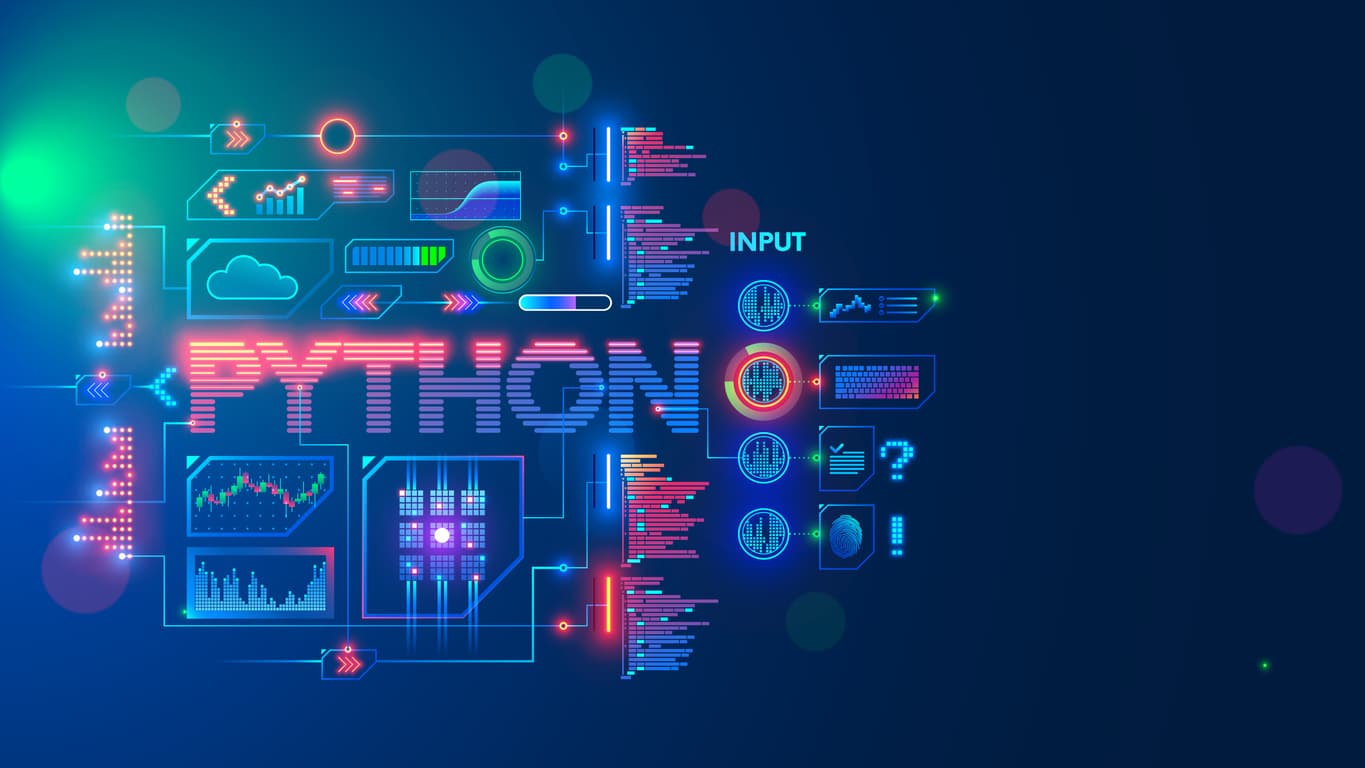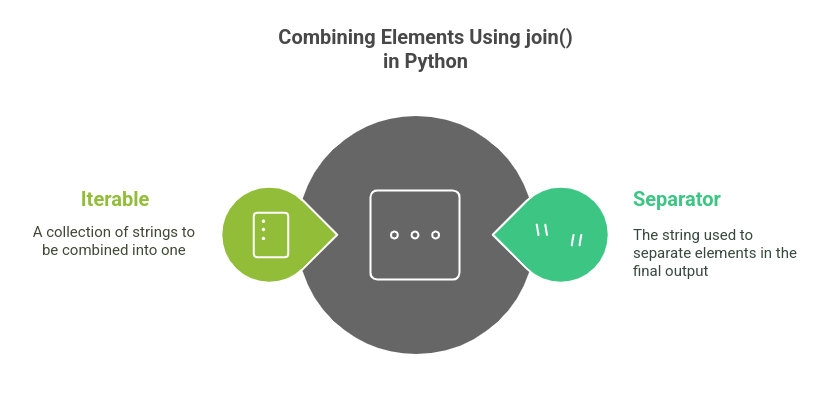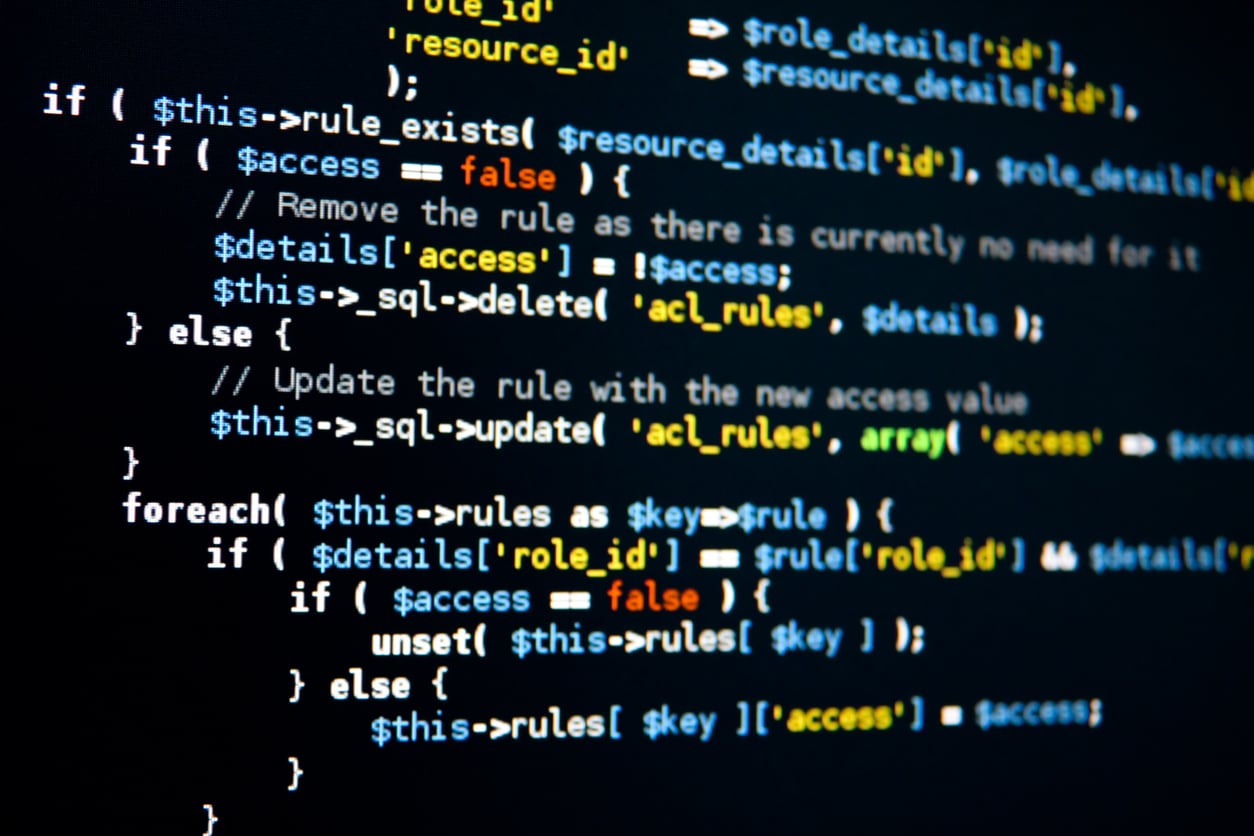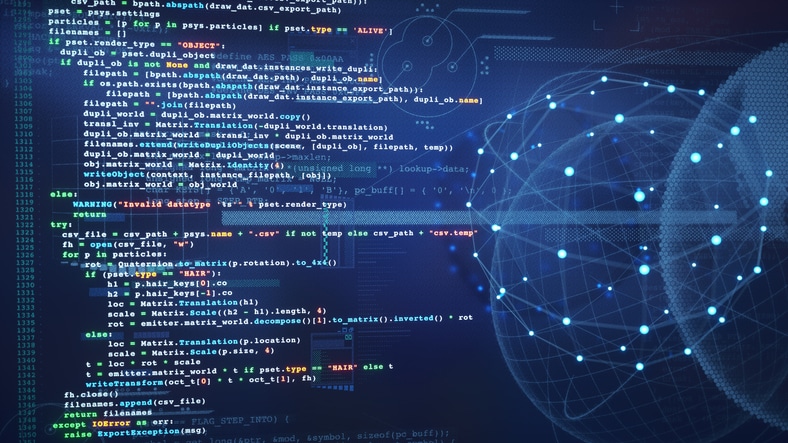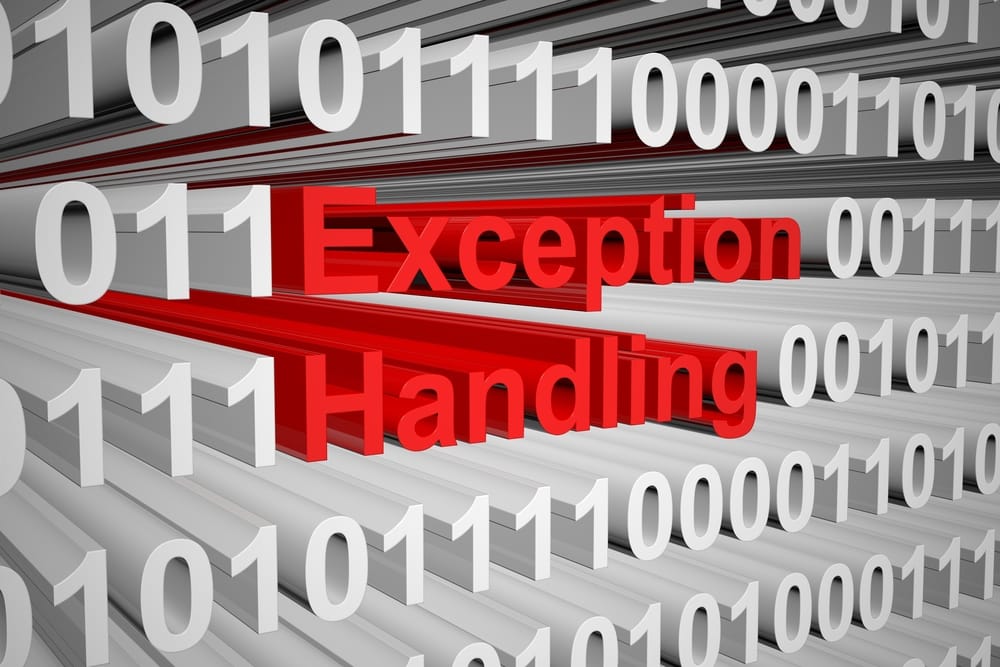- Introduction
- Explanation of the popularity and importance of Android app development
- Overview of the diverse range of Android project ideas and possibilities
- Project 1: Weather Forecast App:
- Project 2: To-Do List App
- Project 3: Recipe Finder App
- Project 4: Fitness Tracking App
- Project 5: Language Learning App
- Project 6: Expense Tracker App
- Project 7: Social Media App
- Project 8: Music Player App
- Conclusion
Introduction
Android is an open-source operating system that is used for mobile devices like smartphones and tablets. Developing Android projects play an important role in the life of an Android developer because working on Android projects is the only way to learn Android. All you need to know is the basics of Java and Kotlin. In this article, we are going to talk about some top Android projects that you can work on to enhance your knowledge and upskill yourself in Android development. I will also provide the links for the source code of the projects that we’ll talk about in this blog. You can refer to those links and understand the code and customize it in case you need to add more features.
Explanation of the popularity and importance of Android app development
With the increase in the usage of smartphones and tablets, android app development has gained immense popularity and importance due to several key factors that include:
1. Large user base: Android is the most widely used OS with a large user base. Developing Android applications allows Android developers to reach a large and diverse user base. Creating Android apps and launching them into this large community can provide their apps tapping into a large market of potential users.
2. Customizability and flexibility: Android provides you with the flexibility to customize the design and build apps based on the specific needs of the users. The platform allows extensive customization of user interfaces that ranges from simple to complex enterprise solutions.
3. Several Channels for Distribution of Apps: There are multiple channels where Android apps can be published. One of the huge channels is Google Play Store, where developers can publish their apps and earn money.
4. Developer-friendly environment: Android offers a developer-friendly environment because it comes with proper documentation, a large community to provide support, software development kits (SDKs), and other developer tools.
5. Open-Source Platform: As we all know, android is an open-source operating system that provides developers with a large number of resources and tools to create their Android applications.
Overview of the diverse range of Android project ideas and possibilities
Android app development provides a large range of ideas and possibilities. Here’s an overview of some popular and innovative Android project ideas:
- Language Learning App: Building an app that helps users to learn new languages can be very productive. You can create lessons, quizzes, vocabulary-building exercises, and pronunciation practice sets in that app so that the user can learn as much as he wants from that app.
- Smart Automation: With smart automation, I mean that you can create apps that control users’ home appliances such as lights, security systems, cameras, thermostats, fans, and other appliances.
- Health and Fitness: This could be a great investment because, in this fast-pacing world, all of us are so busy doing our work and this way, we forget to take care of our own health and fitness. So, you can create an app that provides information about the user based on their daily physical activities.
- Expense Tracker: This is another great idea for an Android application. Creating an app that helps users to track their monthly or daily expenses could be of great use as users can manage their budgets with the help of that app.
- Job Search Platform: With developments in automation technologies, a large number of the population has lost their job, and it becomes difficult for a person to find a job in this competitive world. So, you can create an app where the organization shares the requirements, and a user can select and apply for the relevant jobs of their choice.
These are just a few examples of the diverse range of possibilities and ideas for Android app development. But there are other ideas too that include News Aggregators, Event Planning and Ticketing, Virtual Personal Assistance, Real Estate Marketplace, and others. You can choose your area of interest and start building an Android application.
Project 1: Weather Forecast App:
A. Description of a weather forecast app that displays real-time weather information: A weather forecast app is a popular and practical Android Project idea that can provide users with real-time information on weather and forecasts. It’s a very useful tool and application for users to stay updated with the weather conditions.
The Weather Forecast App is a comprehensive and user-friendly application that greets users upon opening the app. After that, it prominently displays the temperature, wind speed, humidity, and a simple description of the weather. Users will have the option to permit the application to automatically detect the location, or they can also select the location manually.
You can further enhance the user experience by providing daily and hourly forecasts. This app also provides real-time weather alerts and warnings to users. You can also add or remove any functionalities that you want to include in your Android application.
B. Discussing the use of APIs, user interfaces, and data parsing in the project: The development of a weather forecast application requires the integration of several APIs, designing user interfaces, and parsing data to provide accurate and meaningful weather information to users.
API Integration: To fetch real-time weather information, you need to integrate y that our app with a weather data API. Several APIs provide weather data, including OpenWeatherMap or Weather Underground. These APIs provide users access to a vast and open database of weather information.
User Interface: The success of an Android app also depends on the user interface of that application. Therefore, it should be a key aspect of a weather forecast app to create a user-friendly and visually appealing interface. The UI should present the correct weather information clearly and intuitively.
Data Parsing: After receiving data from the API, it needs to parse and extract only useful information and transform that information into a graphical form of presentation. So that it becomes easy for the user to understand all the weather information shown on the screen.
C. Highlighting potential features like location-based forecasts and customizable settings: While developing the weather forecast application, you should keep in mind the potential features of the app to enhance user experience. Two important features of the application are:
1. Location-based forecast: With location-based forecast, the user can get real-time weather forecasts of their location. By using the device’s GPS capabilities, you can get the location of the user, and the app can fetch the weather information of that location from the API.
2. Customizable Settings: Other potential features of the app include customizable settings that allows users to personalize their weather experience with the app. Customizable settings should include the units of measurement such as Celsius or Fahrenheit, language preferences, display themes, customized notifications, etc.
By incorporating these two features, you can enhance the overall experience of the users of your application. These features contribute to a more personalized and user-friendly weather forecast application.
For the project source code, please refer to the link given below:
https://github.com/furkanaskin/Weatherapp
Project 2: To-Do List App
A. Description of a to-do list app for managing tasks and reminders: Creating a to-do list app is a versatile and user-friendly application that allows users to manage their tasks and stay organized. With its robust interface and intuitive features, the To-Do List app simplifies task management and ensures that the user never misses any important task or deadline.
Upon opening the application, users are greeted with a clean and minimalist home screen. This screen is also used to view the task dashboard. Users can create, edit, and organize tasks easily by entering the task names, descriptions, data, and time and assigning priorities to the tasks.
B. Discussing features like task creation, editing, and deletion, as well as task categorization and prioritization: The To-Do List app provides various features like creating tasks, editing, and deletion. You can also prioritize tasks by selecting an option of how important they are. Let’s explore the features in more detail:
1. Task Creation: Users can easily create tasks by entering the task name and a concise description. They also need to provide other details such as date and time, priority, and attachments, if any.
2. Task Editing: This app allows users to edit their tasks without much effort. You can simply go through the tasks and edit any information you want, such as date, time, priority, or other.
3. Task Deletion: After creating tasks, suppose you want to delete any of the tasks that are no longer needed, you can simply delete them effortlessly. This application allows you to delete any tasks, whether they are completed or not.
4. Task Categorization: When you are creating any task, you can provide the category of that task as well. Creating personalized tasks is also easy that include work, personal, or any specific category. Grouping of tasks helps you to get a clear overview of the tasks and facilitates task management.
5. Task Prioritization: With this To-Do List app, you can assign the priority levels of the tasks. By enabling task priority, you can distinguish between high, medium, and low-priority tasks. This way, you can focus on tasks that require immediate attention.
C. Exploring additional functionalities like reminders, notifications, and cloud synchronization: In addition to task creation, editing, and deletion, this app also provides you to customize some functionalities like reminders, notifications, and cloud synchronization to enhance the task management experience. Let’s dive into these features:
1. Reminders: Our To-Do List app also provides timely reminders to ensure that users stay on top of their tasks and never miss any important updates or deadlines. Users can set reminders for specific tasks by providing the data and time they want to get reminded.
2. Notifications: With this app, you can customize the notifications of your task reminders. You can customize the size and sound of the notification banner on your smartphone and also set the notifications as email reminders to prompt the users about upcoming or overdue tasks.
3. Cloud Synchronization: Cloud synchronization means that you can access your tasks across multiple devices. By securely syncing your tasks on the cloud, you can access and manage your tasks from your smartphones, tablets, or computers without any effort.
To access the source code for this To-Do List app, please go to the GitHub link provided below:
https://github.com/opencodeiiita/ToDo-List-App
Project 3: Recipe Finder App
A. Description of a recipe finder app that allows users to search and discover recipes: The Recipe Finder app is user-friendly and versatile that allows users to search and discover a wide range of dishes and their recipes. With its large recipe database and powerful search capabilities, users can search the recipe of any delicious and inspiring recipe.
When the user opens the app, they are presented with a visually appealing home screen that shows all the featured and popular recipes and trending dishes. This app allows users to search the popular dishes based on their location. For example, if you are a North Indian and trying to cook a South Indian dish, then you can simply go to advanced search, where you can select South India as the location and search for the popular dishes in that region. This way, you can search for the popular dishes and their recipes without much effort.
B. Discussing the use of APIs for recipe data, search filters, and ingredient-based search functionality: APIs provide a convenient way to connect the applications with databases and gather information whenever required to populate the recipe collection in the app. The app uses APIs for recipe data, search filters, and ingredient-based search functionality in the following ways:
1. Recipe Data API: The application integrates with a recipe data API that provides a large collection of recipes. Whenever the user tries to gather information about any recipe, this API fetches the recipe data from databases and presents it to users in a structured and organized format.
2. Search Filters API: To enhance the user experience, this app utilizes a search filter API that is directly connected to the databases. So, whenever a user tries to find a recipe, he can perform the search based on specific criteria such as cuisine, ingredients, meal type, etc. This way, users will get more specific search results.
3. Ingredient-based Search API: As we just discussed, the Search Filters API, the ingredient-based API, is also similar to that where it searches for the recipes based on ingredients chosen by the user. The functionality is achieved by integrating the ingredient-based search API with the databases. Users can simply select or input the ingredients they have on hand, and the API processes this information to suggest related recipes that utilize those ingredients.
C. Exploring additional features like bookmarking favorite recipes and sharing recipes on social media: With its search-based features, this app also provides some additional features, such as bookmarking favorite recipes and sharing recipes on social media. Let’s discuss these two features in detail:
1. Bookmarking Favorite Recipes: So when a user is searching for some recipes, and he/she likes some recipe or wants to look for that recipe later, this application allows the user to bookmark that recipe. This way, bookmarked recipes are added under the category bookmarks, where users can go back to the recipe whenever they want to check that recipe.
2. Sharing Recipes on Social Media: This app allows users to share recipes on various social media platforms. There might be some situations where the user tried some of the recipes from the app and want to share it with someone, then they can easily share it on social media or other platforms as well by clicking the share button.
These additional features contribute to enhanced user experience and foster a sense of community within the application. Users can easily save recipes, keep them organized, and share them whenever they want.
For the source code of the Recipe Finder Android App, please refer to the below GitHub link:
https://github.com/deepakdawade/Recipe-Finder
Project 4: Fitness Tracking App
A. Description of a fitness tracking app that helps users monitor their exercise and health activities: The Fitness Tracking App provides a user-friendly interface and allows users to track their daily health activities. The app aims to provide a healthy lifestyle to its users, including setting goals, tracking current progress, analysing past activities, and making informed decisions for their fitness.
The Fitness Tracking App is designed in such a way that users can track their health and improve their exercise and physical activities. By combining exercise tracking, health monitoring, workout plans, nutrition planning, and community engagement, this app aims to empower users to make their choices healthier and achieve fitness goals.
B. Discussing features like step counting, calorie tracking, workout logging, and progress visualization: The Fitness Tracking App provides various features to help users monitor their health and fitness. This app allows users to manage their exercise and health activities effectively. Some key features of the app include the following:
- Step Counting: The app’s step counting feature allows the user to track how many steps they’ve walked for the day. To track the steps, the app uses the device’s built-in accelerometer or connects to a wearable fitness tracker. It tracks the total number of steps taken throughout the day, providing feedback on the total calories burned.
- Calorie Tracking: The Fitness Tracking App provides nutritional information to the user based on their calorie intake and expenditure. Users can log their meals and food items by scanning the barcode of the food item. After that, this app calculates the total calories consumed and compares it with the calories burned for the day through exercise or physical activities.
- Workout Logging: With this app, users can log their workout by recording details such as the exercise type and duration. This feature allows the users to keep a record of their exercise routine and track their daily progress.
- Progress Visualization: With progress visualization features, users can monitor their progress and identify trends to stay motivated. Visualization helps to better understand the progress over time and take appropriate actions if needed for any improvements.
C. Exploring additional functionalities like goal setting, achievement badges, and integration with wearable devices: In addition to the core features that we just discussed, this app provides some additional features too such as goal setting, achievement badges, and integration with wearables such as fitness bands or smartwatches. Let’s have a look at these additional functionalities in detail:
1. Goal Setting: Users can set personalized goals based on their specific objectives like weight loss, muscle gain or overall fitness. This app allows users to enter their targets for steps taken, calories burned, distance covered, or other metrics.
2. Achievement Badges: To keep the user motivated, this app provides achievement badges whenever the user completes any target. When the user reaches milestones or accomplishes their specific challenges, this app provides virtual badges that motivate the users and keep them engaged.
3. Integration with Wearable Devices: The Fitness Tracking App provides seamless integration with wearable devices such as fitness bands or smartwatches. With this integration, this app can efficiently track the steps, blood pressure, spO2, sleep patterns of the user, or other relevant metrics that can affect the health of the user.
Here is the link to the source code for the Fitness Tracking Android App project:
https://github.com/Fitness-Guys/Fitness-Tracker-App
Project 5: Language Learning App
A. Description of a language learning app that facilitates vocabulary and phrase learning: The Language Learning App is a comprehensive tool that allows users to improve their vocabulary and learn new phrases in a foreign language. The app aims to make the language learning process more engaging and interactive for users of all levels. This way, users can learn any language without facing any difficulty.
By offering vocabulary building, phrase learning, flashcards, fill-in-the-blanks, quizzes, pronunciation practices, personalized learning paths, and social learning features, the app allows users to develop their language skills at their own pace and in a way that suits their learning style.
B. Discussing features like flashcards, quizzes, pronunciation practice, and progress tracking: This Language learning App provides various features to enhance the learning experience and help users make progress in their learning journey. Some of the key features of this application are as follows:
1. Flashcards: Digital flashcards are an interesting way to keep users engaged with their learning journey. It’s a fun way to learn new words, phrases, or sentences in their target language. The flashcards appear in random order and prompt users to recall the corresponding translation or definition.
2. Progress Tracking: This app allows users to track their progress over time so that user will get to know where he needs more attention or improvements. Progress tracking may also include progress bards, level indicators, or statistics that show the performance and advancements over time. This way, users can stay motivated, set their goals, and keep learning.
3. Pronunciation Practice: This app focuses on overall learning for the user, which means that the user will learn to speak and listen to the new language. To assist users in improving their pronunciation, the app allows users to record their sentences in that language and compare it with correct pronunciation to the native speaker’s voice. This way, users will get to know where are need any improvement to correct their pronunciation skills.
4. Quizzes: The app keeps the users motivated by providing quizzes where users’ knowledge and understanding are assessed. Quizzes may also include multiple-choice questions, fill-ups, or matching exercises. This way, users can test their knowledge and grammar skills.
C. Exploring additional functionalities like speech recognition, language level assessments, and cultural notes: In addition to the features we discussed in the above section, this app provides more functionalities like speech recognition and language assessments to enhance the learning experience of users. These functionalities include:
1. Speech Recognition: The Language Learning App uses the device’s microphone to record the user’s sound to implement the speech recognition functionality. Users can practice in real time by speaking the target language and get instant feedback on their pronunciation and fluency.
2. Language level Assessments: This app also takes assessments based on the levels completed by the users. Such that if a user completes a level, then at the end of the level user needs to give an assessment where questions related to the topics covered in that level are asked and based on that assessment only, the user can unlock the next levels. This way, the user will stay focussed on the learning.
3. Vocabulary Expansion: Apart from flashcards or quizzes, this app provides additional ways to expand the user’s vocabulary that might include word-of-the-day features or contextual vocabulary exercises.
4. Language Challenges or Games: This app also incorporates some challenges or games that users can play along their learning journey to make the learning process more interesting and engaging. These games or challenges help in improving grammatical skills, vocabulary, and sentence creation.
5. Cultural Notes: In order to provide the user with a well-rounded language learning experience, this app provides cultural notes or insights related to the target language such that the user will get to know more about the traditions associated with the language. This way, users will gain a deeper understanding of the language in its cultural context.
To get the source code for this project, please refer to the link below:
https://github.com/Abdullah-TU/Finnish-Language-Learning-App-Android
Project 6: Expense Tracker App
A. Description of an expense tracker app for managing personal finances: The Expense Tracker App is a very useful tool that allows users to manage their personal finances, track their expenses, and budget planning. With this app, users will get a convenient way to monitor their spending, set budget goals, and gain insights into their financial habits. This will help them to track the areas where they’re spending too much and what are the savings they currently have so that they can plan their expenses in future.
This app aims to provide personal finance management to the users to take control of their finances. By providing information about their expenses, the app provides a dashboard where user can manage their budget, analyse their expenses, and set goals for money saving.
B. Discussing features like expense logging, categorization, budgeting, and data visualization: The Expense Tracker App provides a range of features to help users manage their personal finances more effectively. These features include:
1. Expense Logging: This app allows users to log their expenses in the app such that they can track where they’ve spent and how much they spent. This app also keeps a record of the date and time of the amount spent. This feature allows users to have a comprehensive record of their expenses.
2. Budgeting: With budgeting, users can set their budgets for different expense categories and define how much they will spend in that category. The visual indicators of this app show users how much is their actually spending as compared to the budgeted amounts.
3. Visualizing reports: With the data provided in the app, users will be provided with some reports in the form of charts and graphs that provide an overview of their monthly spending in different categories. By presenting the data in a visually appealing form, users will get a better idea of where they need to control their spending habits and make informed decisions.
4. Expense Analytics: With expense analytics, users will gain a deeper insight into their spending habits. The app provides features such as expense trends by comparing them with the budgeted amount and expense breakdown in different categories. These features allow users to find areas where they can potentially save money and make adjustments to their budget.
5. Categorization: Categorization allows users to set their budgets for different categories, such as groceries, entertainment, bills, transportation, and savings. Users can assign some amount to each category and plan their budget accordingly. This will help users to improve their financial planning and track how much they’ve spent on each category.
C. Exploring additional functionalities like receipt scanning, expense analysis, and data export options: The Expense Tracker App is not only limited to the features we’ve discussed so far. But it also provides some additional functionalities that include receipt scanning, expense analysis, data export options, and customizable reports:
1. Receipt Scanning: The app provides a receipt scanning feature that allows users to capture the receipts of their spending. After scanning the receipts, this app fetches the relevant information, such as vendor, date, and amount. This will help the user to get more information about where they’ve spent.
2. Expense Analysis: The Expense Tracker App provides an advanced analysis of expenses where users can gain deeper insights into their spending patterns. This will help users to find their spending trends, track their spending habits and take appropriate actions where needed.
3. Data Export Options: This feature is used to export financial data in various formats. Users can export the data they’ve entered in the app in several formats, such as CSV, PDF, or XLSX. And user can use these files for further analysis purposes.
4. Customizable Reports: With this app, user can get customized reports where user can select the desired time period, expense categories, or other filters to generate the reports to get more information on their spends. Customizable reports are a great way to understand the financial spends and analyze them to make financial planning.
Please refer to the link below for the Source code of our Expense Tracker App Project:
https://github.com/syncfusion/Xamarin-ExpenseAnalysis
Project 7: Social Media App
A. Description of a social media app with user profiles, friend connections, and content sharing: The Social Media app is a powerful tool nowadays as it allows users to create their profiles, make new friends, expand their network, and share various types of content. Social Media is just like a virtual hub where people meet and engage with others, express themselves, and stay connected in this digital realm. With this app, you can build your own community or be a part of the community.
The goal of creating a Social media app is to create a vibrant and interactive community where users can create profiles, build their network, and engage with others. With this app, users can explore personalized news feeds, promote self-expression, and facilitate the exchange of ideas among other users of this app.
B. Discussing features like user authentication, a news feed, posting content, and liking/commenting on posts: Certainly, the Social Media App comes with several key features that play a very important role in facilitating engagement and interaction among users. Some of these key features include the following:
1. User Authentication: User authentication is the main aspect of this application because it is very important to ensure the security and privacy of user accounts. Authentication is the process of verifying the details provided by the user and validating the credentials, such as username and password.
2. Posting Content: This app allows users to create and share any type of content within the app that includes images, videos, audio, and text. This way, users can express themselves and share personal experiences, opinions, or creative works, among others.
3. News Feed: The news feed is another useful component of the app that aggregates and displays a personalized stream of content from the user’s friend. The news feed is based on an algorithm that determines the order and relevance of content based on several factors, such as user preferences, users’ engagement with content, and their likes/dislikes.
4. Liking/Commenting on Posts: The Social Media App allows users to like or comment on content shared by other users. This way, users can show appreciation or agreement over a particular post.
C. Exploring additional functionalities like messaging, notifications, and privacy settings: With the above-discussed features, the Social Media App provides some additional features too that include messaging, notifications, and privacy settings. Let’s explore these features in detail:
1. Messaging: This application allows users to send direct messages to other users to have private conversations within the app. Users can also create groups where they can communicate with multiple people simultaneously. Users can send text, videos, images, or audio messages. Messaging allows users to interact with others in real time and fosters more intimate and private interactions among other users.
2. Notifications: Notifications are an essential part of an application because notifications keep us informed about relevant activities and updates within the app. Users can customize notifications for various events, such as receiving messages, friend requests, new posts, or other purposes. This way, users can stay engaged and up-to-date with the latest activities happening in their social network.
3. Privacy Settings: This app provides the user to manage their privacy. Users can take control of their personal information and the visibility of their content. The Social Media app allows users to customize their privacy preferences to determine who can view their profiles and posts and access the personal details on their profiles.
4. Explore Feature: This feature allows users to find new content within the app. With this feature, users can also find new accounts, content, or topics of their interest. The explore feature provides users with the capability to explore new connections, content, and communities.
These additional features contribute to the overall user experience, engagement, and safety within a social media app. It provides users more control over their content and account so that they can personalize their profiles, discover new content, and stay connected with their social network.
You can get the source code for this app project by clicking the below GitHub link:
https://github.com/DipanshKhandelwal/SocialApp
Project 8: Music Player App
A. Description of a music player app that allows users to play and organize their music collection: The Music Player App is a versatile application that allows users to play and organize their collection within the app. The interface of the application is user-friendly and provides a range of features to enhance their music listening experience. With this app, users can enjoy their favorite music and create playlists efficiently.
The Music Player App provides its users with a feature-rich and customizable music listening experience where users can customize various features of the music, such as sound, background music, and equalizer settings. Users can also download music so that they can listen to offline music. By continuously using this app, users can enhance their music listening experience and enjoy music streaming services.
B. Discussing features like audio playback, playlist creation, equalizer settings, and song recommendations: The Music Player App comes with a range of features that include audio playback, equalizer settings, playlist creation, and song recommendations. These features contribute to the enhanced experience of the user. Let’s discuss some key features in detail:
1. Audio Playback: This app allows users to play the music files that they already have in their smartphone and also allows them to find their favorite music on the internet. This app supports various audio formats such as MP3, AAC, FLAC, and others. So that users will not face any issues while playing any music.
2. Playlist Creation and Management: With this app, users can create and manage their playlists with ease. They can select their favorite songs and add them to the playlist by providing a customized name to their playlist. They can also remove any songs from the playlist they’ve created. This makes it easy for users to explore the music of their interest in their playlists.
3. Equalizer Settings: This feature is very useful for people who have knowledge of music because, with this feature, users can customize the equalizer settings of the music that, include treble, bass, midrange, and more. Users can also try pre-defined equalizer settings to enhance the audio quality based on their listening preferences.
4. Song Recommendations: The Music Player App tracks the taste of the music of users so that it will recommend other songs based on the users’ interest. This will provide an enhanced user experience. It suggests songs from similar artists, albums, or songs that users might enjoy based on their existing music collection.
C. Exploring additional functionalities like lyrics display, album artwork retrieval, and music streaming integration: In addition to the features discussed above, there are some additional features too, such as lyrics display, album artwork retrieval, and music streaming integration as described below:
1. Lyrics Display: The Lyrics display will provide the lyrics of the songs you listen to in this app. The lyrics are synchronized while playing a song so that users can follow along with the lyrics in real time and enjoy the music.
2. Album Artwork Retrieval: The Music Player App can automatically retrieve and display the album artwork for each song in the music library. This will enhance the visual appeal of the app and makes it easy to browse songs from that album or playlist.
3. Music Streaming Integration: This app offers a wide range of music options so that users can play songs by integrating this app with other apps. The Music Player App can integrate with popular music streaming apps such as Apple Music, Spotify, or YouTube music. With this integration, users can play their music directly within the app.
You can find the Project Source Code from the GitHub link below:
https://github.com/Sangwan5688/BlackHole
Conclusion
So, these were the projects that we discussed in this blog. These Android projects provide a range of functionalities and cater to various user needs.
A. Encouragement to explore and build Android projects based on personal interests and learning goals: Building Android projects not only increase your skill set but also help you identify your personal interests and learning goals. By working on some Android app development projects, you can enhance your skills, gain practical experience, and find creativity in yourself. There are several reasons to work on Android projects that, include:
- You will get hands-on experience and learning by working on real Android application development.
- You will get a chance to showcase your creativity through the app you are building.
- While developing the application, you will learn how to tackle real-world problems and find innovative solutions.
- Building Android projects not only grow your coding or technical skills but also contribute to your personal growth.
- After completing your Android projects, you can showcase them to potential employers or clients that can help you in getting jobs or clients.
B. Final thoughts on the creativity and innovation in Android app development: So, here we’ve come to the end of this blog. In this blog, we’ve talked about various kinds of Android application projects that you can start working on. This will help you get experience on real-life projects. As we all know, creativity and innovation play a vital role in Android App development, so you can boost your creativity and create some innovative apps that will impact society, and people can get benefit from that applications.
Android apps empower developers to create a unique, user-centric, and impactful application that stands out in this competitive world. By embracing your creativity and innovative ideas, you can showcase your Android app that can deliver exceptional app experiences to its users.



